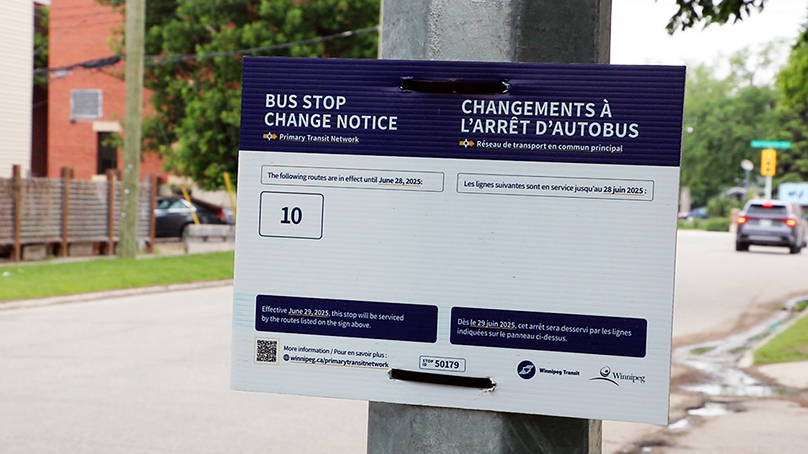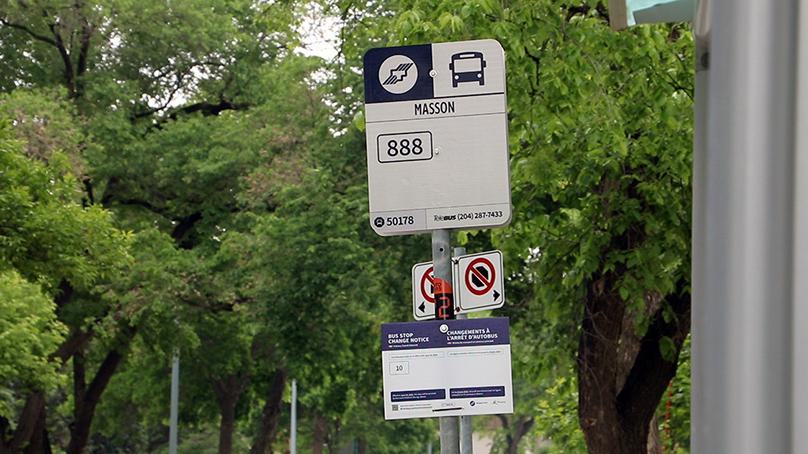June 19, 2025

Winnipeg is getting all new transit routes.
And passengers who have waited for late buses – or squeezed their way into packed ones – may have an idea why.
But why bus stops are being moved or cancelled may be less obvious. Ultimately, it’s all about balance and safety, and other considerations.
Here’s why stops are changing when the Primary Transit Network and its feeder routes launch on June 29:
Balance
Stopping too much can make a bus route less reliable, slower, and inefficient. But not stopping enough can make the route less accessible. Finding the right balance for every route is crucial to the success of our new network.
The current route network has inconsistent spaces between stops. With the new network, stops are spaced according to their service class (route type). This means they’re further apart on routes with frequent busses.
This ensures buses can come more often and take passengers further, faster.
Meanwhile, stops are closer together on feeder routes. This helps more passengers reach transit with just a short walk.
We’ve put a lot of thought into determining where bus stops will stay, move, or be removed along the frequent routes. You may have to walk a bit further to catch the bus than you’re used to. But once you get on, your bus trip will be shorter and smoother, with fewer stops and starts.

Safety
Safety factors into stop location in a few ways.
We want to make sure our passengers are safe, both on and off the bus. We’re placing new bus stops in pairs near controlled crossings, with safer transfers in mind. Where possible, we’re consolidating stops so passengers can transfer without crossing the street at all.
We’re also moving some stops from what’s called the near side of an intersection to the far side. That means a bus will stop after crossing the intersection instead of before it.
Cars turning right can get stuck behind a bus that stops ahead of an intersection. They may attempt to go around the bus just as the bus begins to move. They may also miss seeing pedestrians waiting in front of the bus to cross the intersection.
Traffic moves more efficiently when buses stop after an intersection. Pedestrians are also easier to see.
This keeps everyone safer.
Other considerations, like parking
We consider what else is around when choosing where a bus stop goes. We want bus stops to be close to points of interest, like universities, malls, and even intersections. We look at:
- How much space is available where we envision a bus stop
- Whether amenities like shelters or signage are in place nearby
- Potential impacts on parking
When a new bus stop subtracts some parking, we often add it back elsewhere nearby.
We’re going from about 5,200 bus stops in Winnipeg now, to about 4,000 starting June 29. And fewer bus stops means more on-street parking, overall.
Got feedback? We’re listening
Think we got something wrong? We want to hear about it.
Please share your feedback with 311. Feedback won’t necessarily override strategic decisions based on balance, safety, and other considerations. But where a case can be made on those factors, stop locations may be reconsidered.
